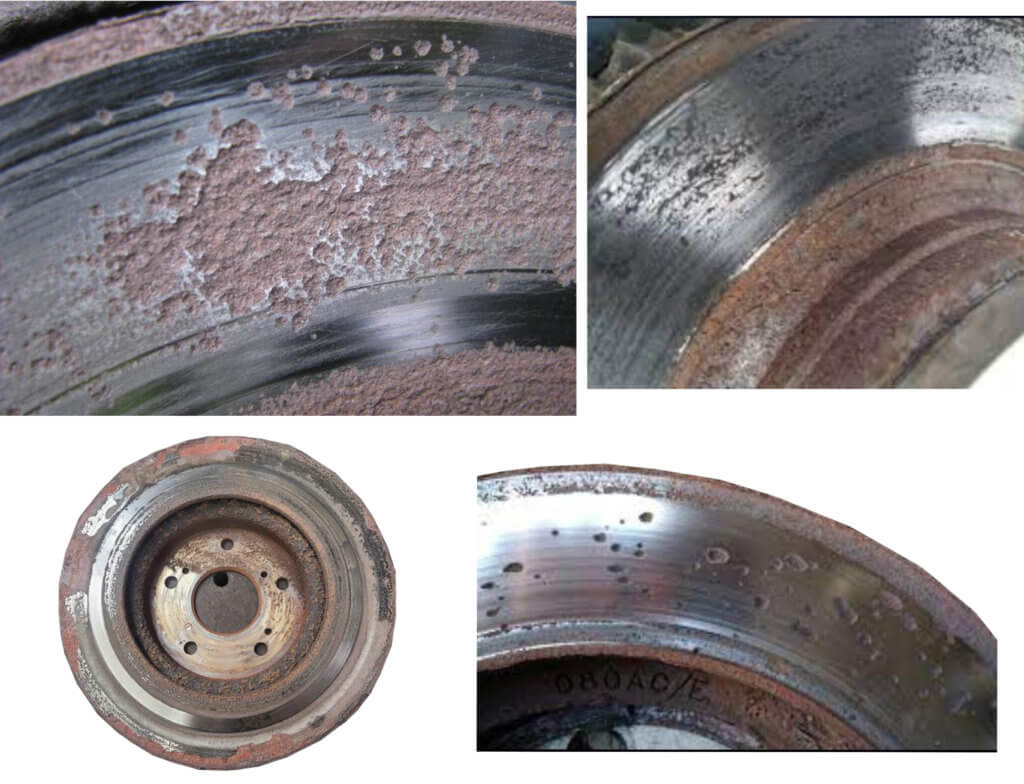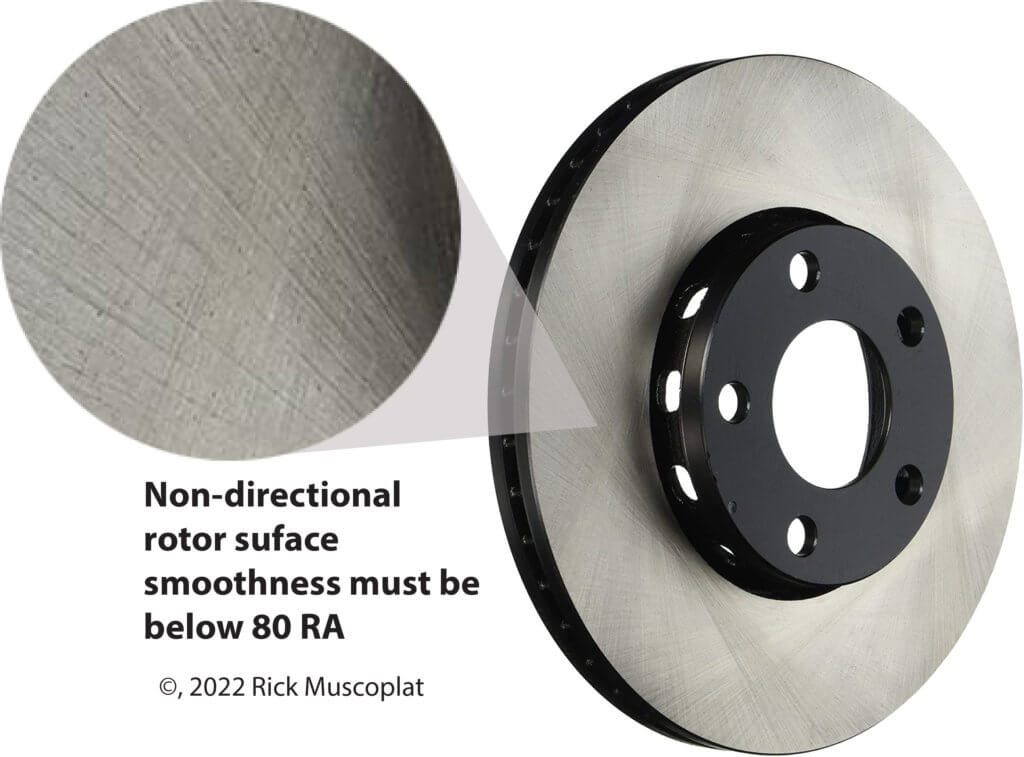Brake pulsation or judder can be caused BTV
Brake torque variation (BTV) is one of two things that can causes brake pulsation
Brake torque variation (BTV) and disc thickness variation (DTV) are the two leading causes of brake pulsation (some people refer to it as brake judder). The pulsation can be felt in the brake pedal, steering wheel and in the driver’s seat. The causes and symptoms of BTV are different than pulsation caused by disc thickness variation due to lateral run out.
BTV happens any time there’s there is a variation of torque across the face of the rotor. The variation may be caused by inconsistent rotor finish, metallurgy flaws or poor metal quality, patches of corrosion on the rotor face, or uneven deposits of friction material on the face of the rotor. Those variations cause the brake pads to grab and then slip (also called slip/stick).
Assuming that new pads and rotors will automatically fix the problem will only create more issues with the customer when the vehicle inevitably comes back.
Rotor Face Surface Issues cause vibration when braking and BTV
Here are some extreme examples of rotor face surface conditions that can cause slip/stick vibration

How smooth is smooth when it comes to brake rotor surface conditions
Brake rotor surface “smoothness” is rated by its Roughness Average (RA). The proper RA is critical to achieving the proper transfer layer for adherent style brake organic and ceramic pads as well as abrasive semi-metallic brake pads.
If the surface is too smooth, it’s impossible to form a transfer layer onto the rotor face. If it’s too rough, the brakes will make noise, wear faster and even lose stopping power.
The RA factor
Ra is described in ASME B46.1 as “the arithmetic average of the absolute values of the profile height deviations from the mean line, recorded within the evaluation length.”
Most new high quality rotors have a non-directional surface finish of 30 to 60 inches RA, with some poorer quality rotors averaging around 50 RS. Many OEM specifications require less than 80 RA.

BTV caused by hard braking
BTV can also be caused by hard braking. Here’s an example of how heavy braking can cause BTV, which is most often misdiagnosed as “warped rotors.” You travel down a steep mountain pass, applying brakes as needed. The brakes heat up beyond the normal temperatures encountered in street driving. Then you come to a stop, holding your brakes the entire time. While you’re stopped, the overheated brake pad leaves an extra thickness friction material on top of the transfer layer. From that point on, you may encounter BTV. Since this happens from high heat, most people assume the rotors have warped. Not true.
You need to produce almost 2,000°F to warp a brake rotor. Street brakes can’t produce that much heat. In fact, street brake pads burn up at much lower temperatures. If your brake pad aren’t charcoal and your rotor doesn’t have blue discoloration, you don’t have a warped rotor, you just have BTV caused by a thick deposit of brake material.
©,2022 Rick Muscoplat
Posted on by Rick Muscoplat